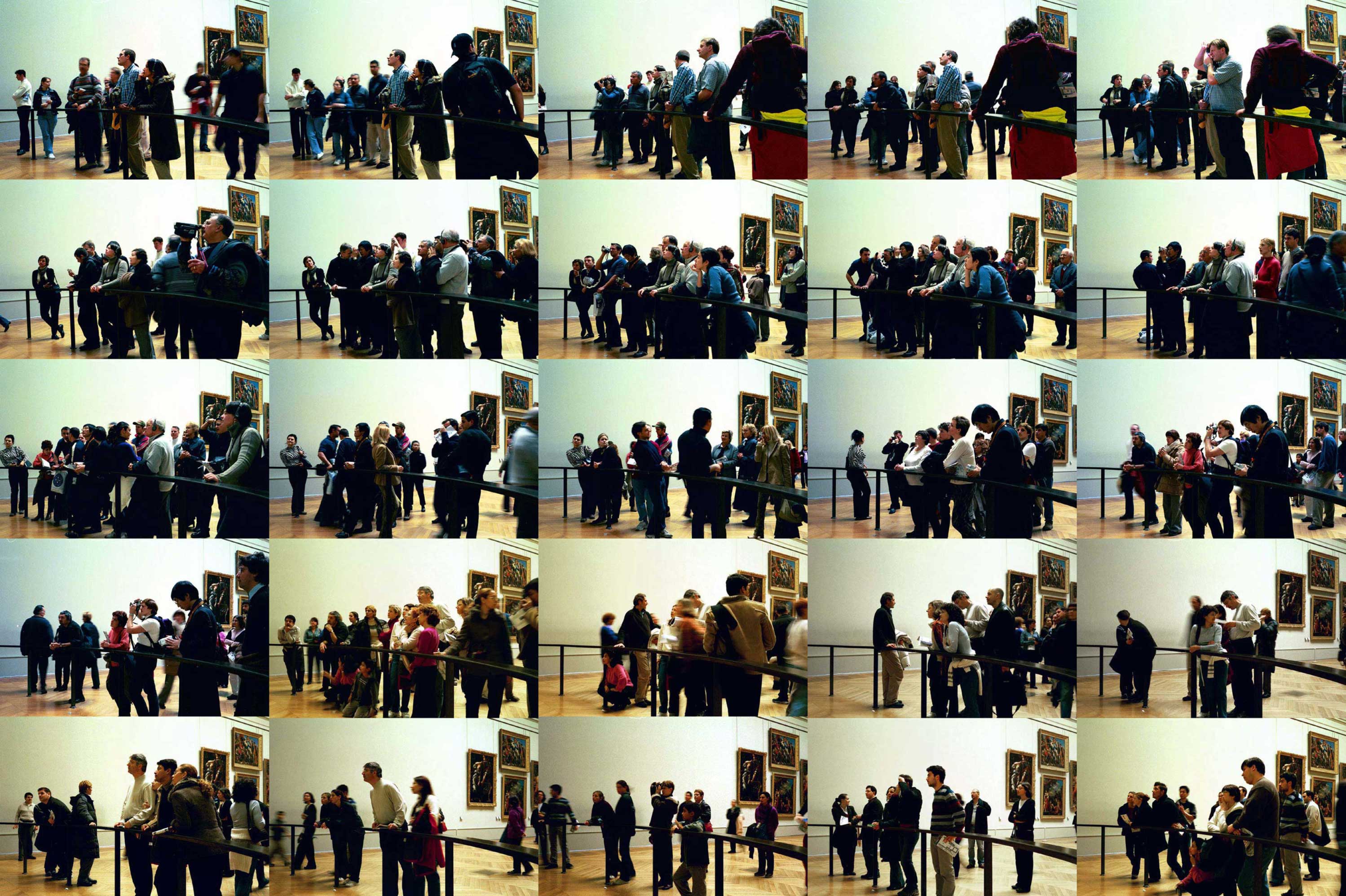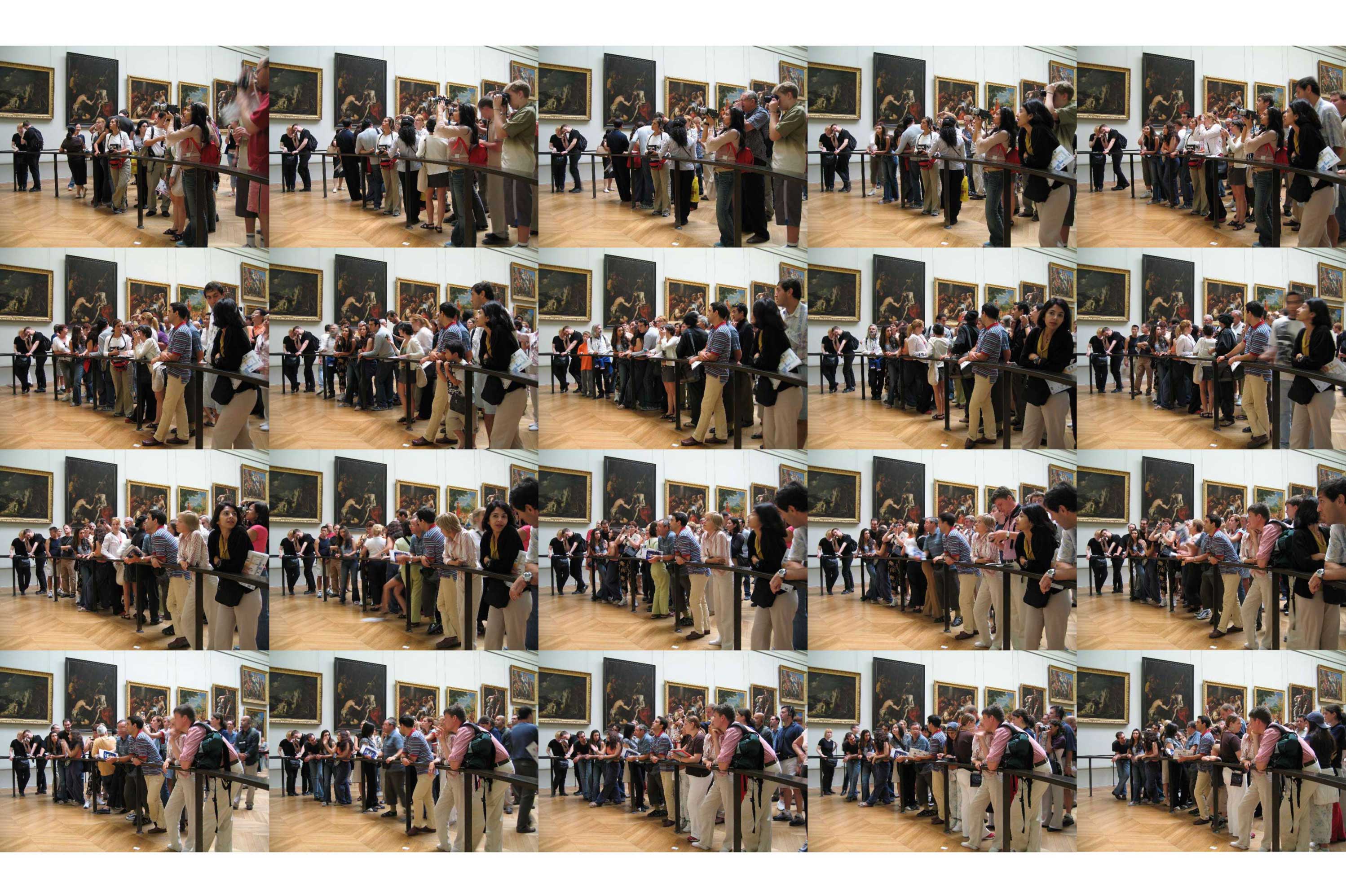

The Mona Lisa is one of the best known artworks in the world. And visiting it is a bit of a pilgrimage for many of us. Some visit on a regular basis, some can only see the painting once or twice in their lifetime (some never actually get to see the real thing. But there is almost no way to avoid her.) What becomes apparent in front of the Mona Lisa maybe more than in front of many other paintings, is the speed of life passing, of how certain factors change, and certain things remain the same. The way we adjust to fit into a group, the way we adjust to be up to date with technology, the way we perceive time and connectedness and space. We have a certain “end of evolution bias”, and assume that wherever we are or whatever we do is the height of life, the “destination”. But that’s obviously not true. As the evolution progresses, the Mona Lisa gently smiles on. It is the same painting, protected by stronger and stronger measures, but still surprisingly small, surprisingly unassuming. Surprisingly open to interpretation.
I visited the painting many times. Obviously many times more than just in 2001 and 2003. I have visited the painting before, and I have seen it after. Though visiting the Mona Lisa has become more and more difficult. She is no longer displayed in the place where I took the photographs. And the visitors certainly are more, and they definitely behave differenly right now. They also come from different parts of the world. And they come with a different set of expectations.
In 2001 I set up my little Leica and took pictures over a span of maybe 25 to 30 minutes. It was a relatively slow experience, and I was interested in the observation how long some people lingered to look at the painting, and yet how limited their way of looking at it was. So many people spoke about “the smile”. And then they also spoke about the idea that Mona Lisa’s eyes followed one around the room. I think it might be a poetic description of what could happen with many portraits. Not the smile, the eyes. Some visitors had their pictures taken in front of the painting. All with film cameras, obviously. Living humans recording themselves on film, in front of an oil painting behind glass. The alignment of materials felt and feels pretty fascinating.
In 2003, the pace was different. And my attention span was apparently much shorter too. I had a small digital camera with me, and it was possible to take many more pictures in a row, and a lot seemed easier. The series took about five minutes to record. More people had cameras with them though. And the idea became more about just taking a picture of the Mona Lisa, a bit like stealing a glimpse of her and taking it home for later consumption. Obviously the quality of a recorded snapshot is a joke compared to being with the actual painting. But it might be a different sense of connection when not just the eyes follow one around the room, but when the entire painting is fed into a machine that can then later reveal a copy of the painting at the push of a button. At any time, anywhere batteries are available. More video cameras were visiting the Mona Lisa too. I imagined the recordings on little cassettes forgotten in some drawers, slowly fading. Or did anybody edit vacation videos? The Mona Lisa was one of the little extras. A short, non speaking role.
It would be interesting to do this series of images again. But it might be easiest with images just pulled from Instagram. Maybe all I would need to do could be looking for the hashtag #MonaLisaSelfie. And again, this is not the end of evolution. We are always in the midst of it. We are just tiny particles still flimmering from the shockwave created by the big bang or whatever. The Mona Lisa is one of us in a way. She travels on the explosion wave, obviously a bit slower than we do. She is a point we can come back to, equipped with better and better machines and less and less time, perhaps.
New York City (2014)